You can read Part I here
Day Three: Tamdaghumar, Narayanpal, Jagdalpur, Bastar Shiv Mandir
Yesterday we had returned to Jagdalpur via Gidam, and thus were unable to visit Narayanpal and Tamdaghumar which lie along the Jagdalpur– Barsur road. Today we took the same road once again and in a short while, turned off the beaten (i.e. black-topped) path. A quiet, dirt track passing across a bare, undulating hillside takes one to the Tamdaghumar waterfall.

As expected, Tamdaghumar was utterly uninhabited and quiet. No human presence whatsoever, except for a few local ladies foraging for wood in the forest across.

The waterfall offered a spectacular sight, unspoilt (so far) by any human desecration. It was just us and the roar of the water. Nothing else for miles all around.

Not merely a colony but an entire bustling township of honeybees was established below the rocky overhang.

Infinity pool at the top of Tamdaghumar!
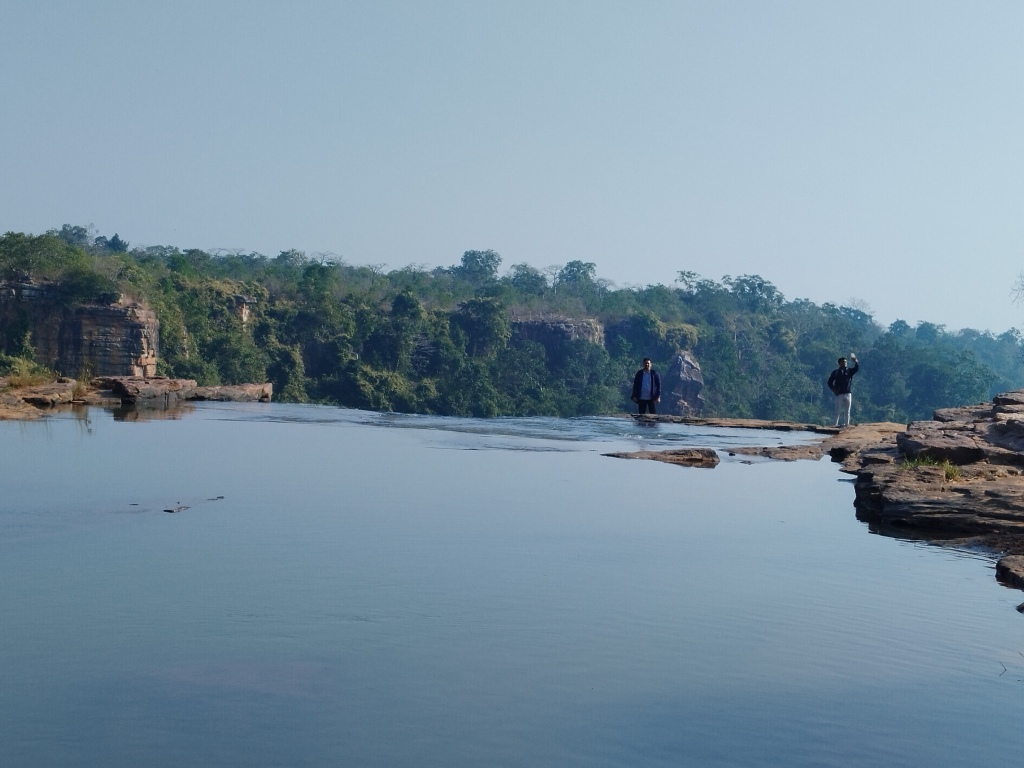
Next stop was the Narayanpal temple. This temple is mostly unravaged and is a joy to look at, due to its architectural beauty.



As per the inscription plate placed by ASI, it was originally a Shiva temple which was later ‘converted’ by placing a Vishnu idol inside. Indeed a piece of India’s ancient history in which Shaivaite and Vaishnavite conflict raged.

An old lady who has her house right next to the temple was selling Papayas. We had given breakfast a skip in the morning and thus were game for a side dish of fruits. The lady chopped it into slices and offered it to us. As we were partaking the delicious Papaya, the lady’s pet cat arrived at the place and began to rub against our legs, meowing continuously. It took us some time to realise that it was fond of Papaya. Quite unusual, and amusing too.

The third destination on the day’s itinerary was Jagdalpur itself. We returned to the town by the same road. After a dosa breakfast at a roadside shanty, we began our exploration of the town’s attractions. The first location was the Jagdalpur Anthropological Museum.

The museum is small in size and has a typical worn-down, governmental air about it. But it has some nice tribal artifacts and cultural exhibits. Since photography is forbidden inside the museum, we clicked some pictures outside on its lawns where tribal huts and other village structures have been erected for display.




I was mesmerized by the intricate brass idols of tribal gods displayed in the museum (A pity the regulations didn’t permit me to take any pictures). I inquired if similar idols were available for purchase. The museum staff put me in touch with an artist on phone. But the cost quoted was beyond my holiday paygrade! I had to call off the bid with a heavy heart.
Next, we reached the Bastar Palace which is located in the heart of Jagdalpur town. ‘Palace’ is a rather generous description as the building is modest in size. The royal family resides there and most of the premises are out of bounds for visitors. We could only see one small section which had a few black- and- white photographs of the Jagdalpur royals on display.
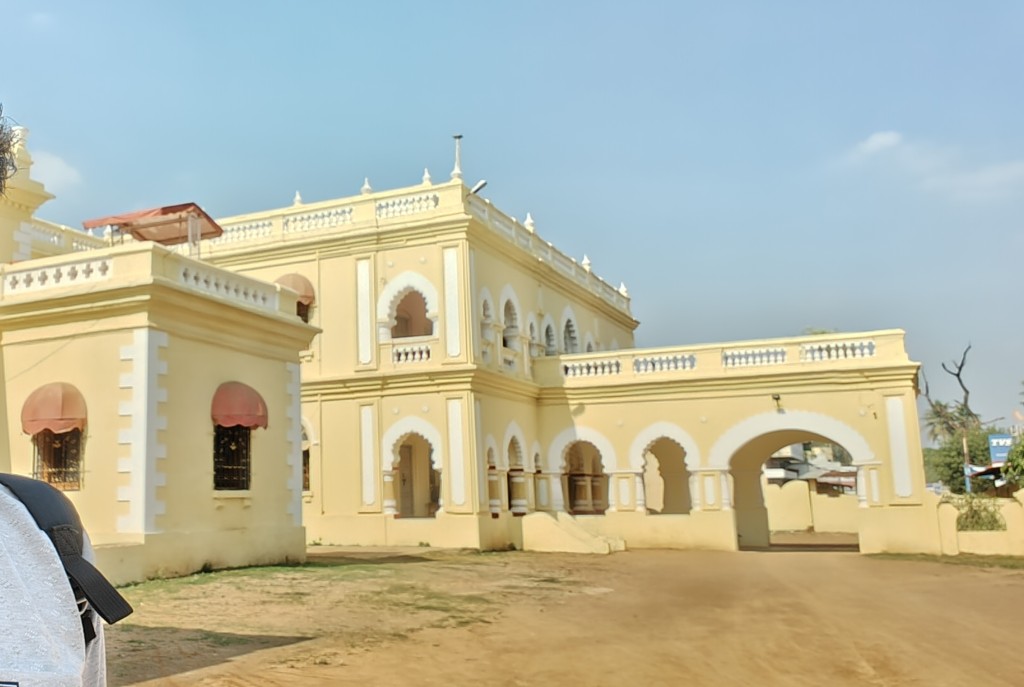
The third stop in the town was the Danteshwari temple.

We briefly paid obeisance to Goddess Danteshwari and began to look for lunch. As luck would have it, an ice cream cart was right in front and we decided to indulge the child within by ordering a rich, tall, sinful glass of ice cream Faluda each.

After a simple but tasty lunch at a basic ‘rice- plate inn’ in the vicinity of the temple, we set off on foot for the Archaeological Museum.

This museum is quite big in size (housed in a three- storey building). It has an incredible collection of ancient sculptures and artifacts.



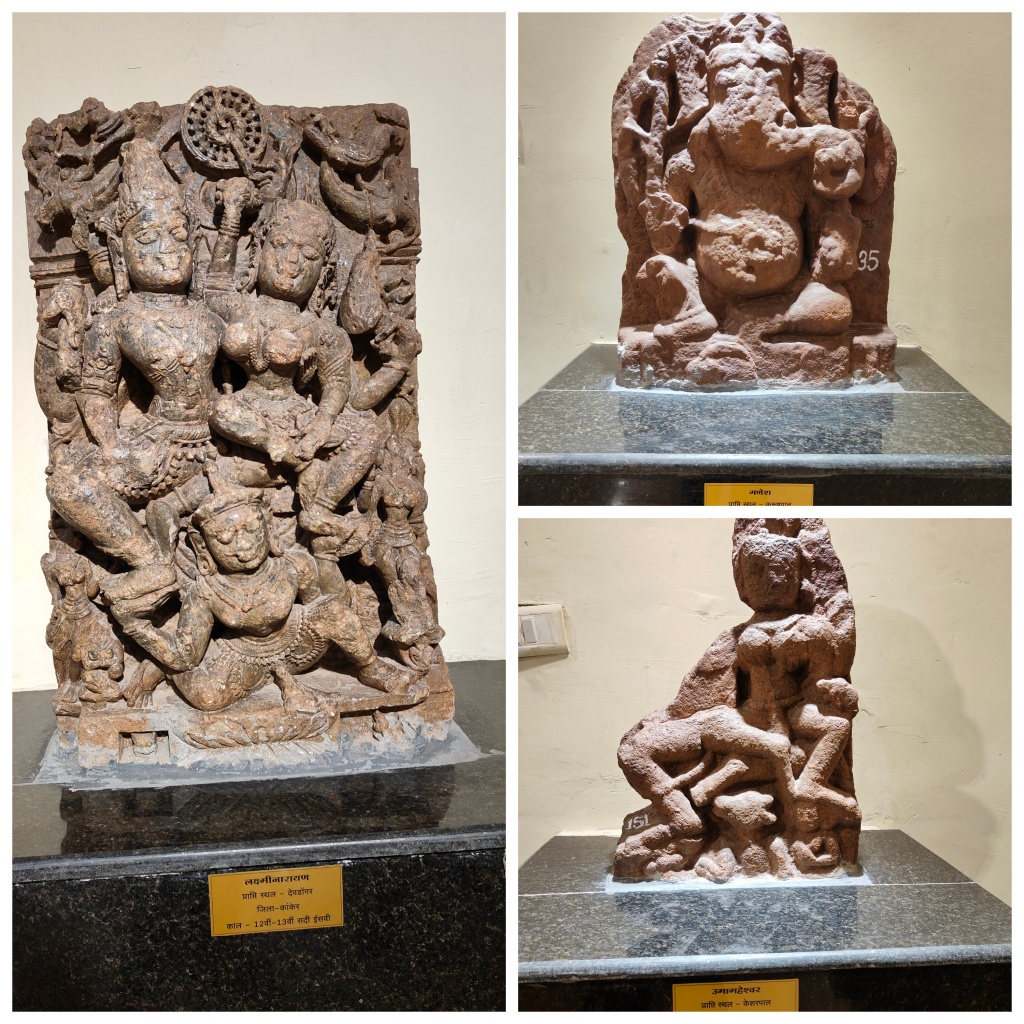
In addition, it also has a good number of enlarged photographs of various tourist attractions and a huge plaster model of Jagdalpur district, marking out all tourist spots. Quite helpful it is.

In this model, we spotted the Bastar Shiv Temple which was not in our original itinerary.
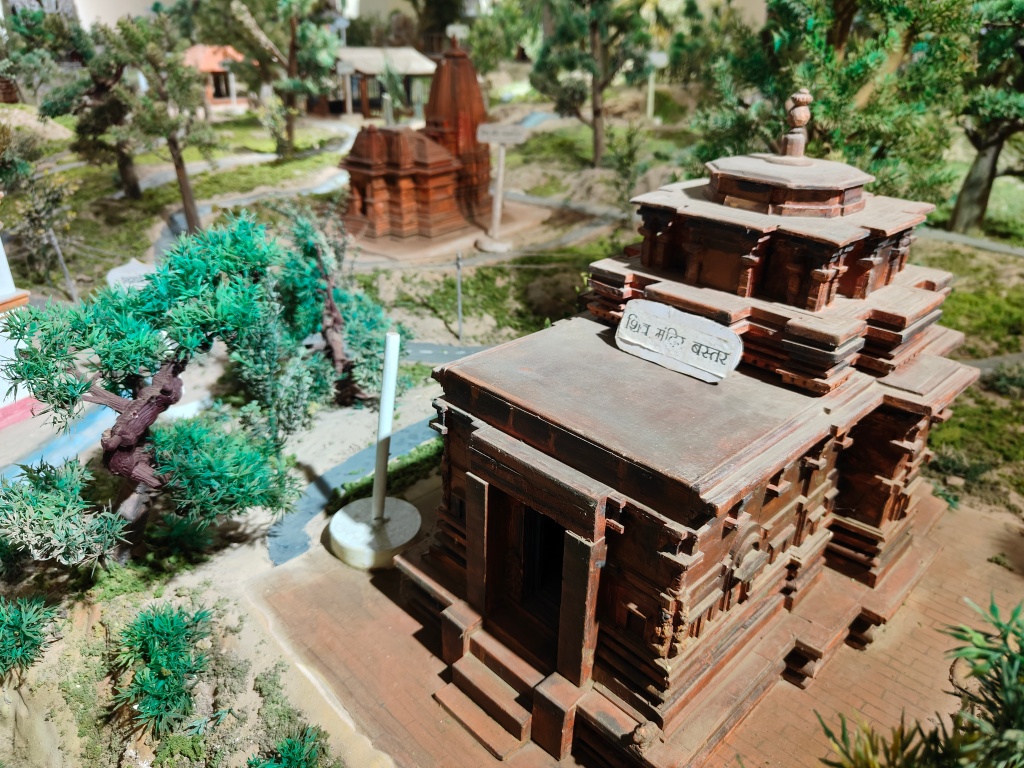
We still had a couple of hours in our hands. We immediately fixed a map and took off on the Raipur highway. Around 30 minutes later, we were at the Bastar Shiv Temple (Note: This ‘Bastar’ is the name of the village in which the temple is situated. Not to be confused with the name of the district/ region which is also called Bastar)

The ancient lakeside temple, located under a thick canopy of trees is beautiful. But it was covered in bamboo scaffolding all over as renovation work was underway.
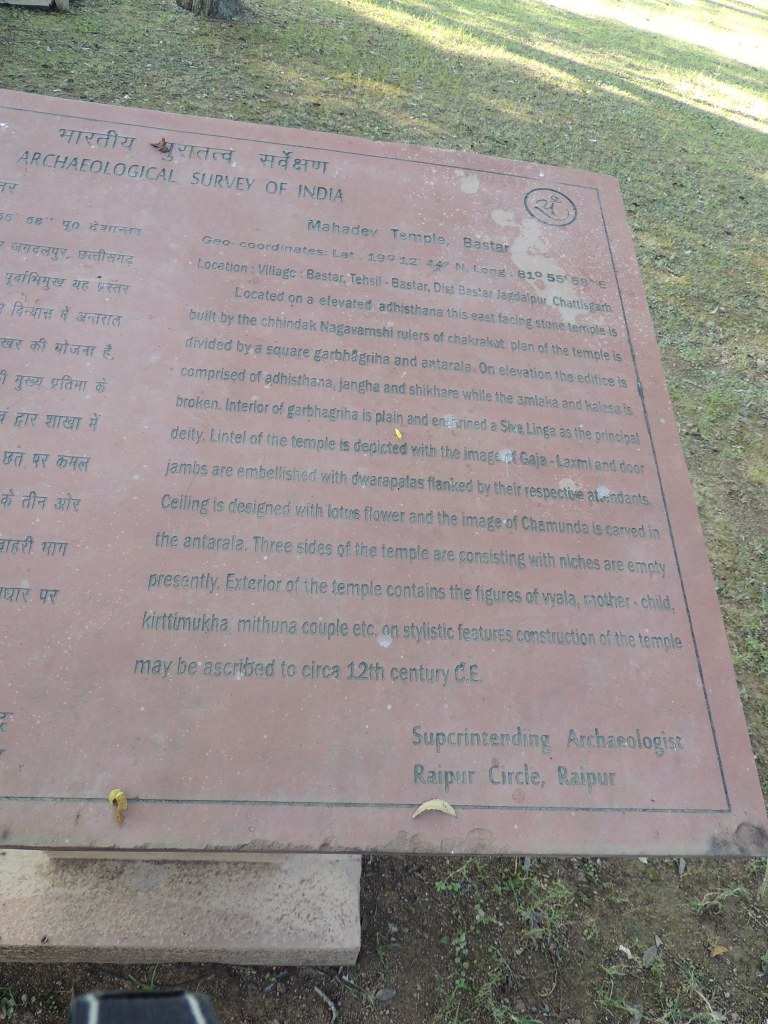
There are a number of black stone idols in the temple courtyard.

This demon- like idol inside the temple transfixed us with its fearsome features. It could be Mother Kaali but I am not so sure.
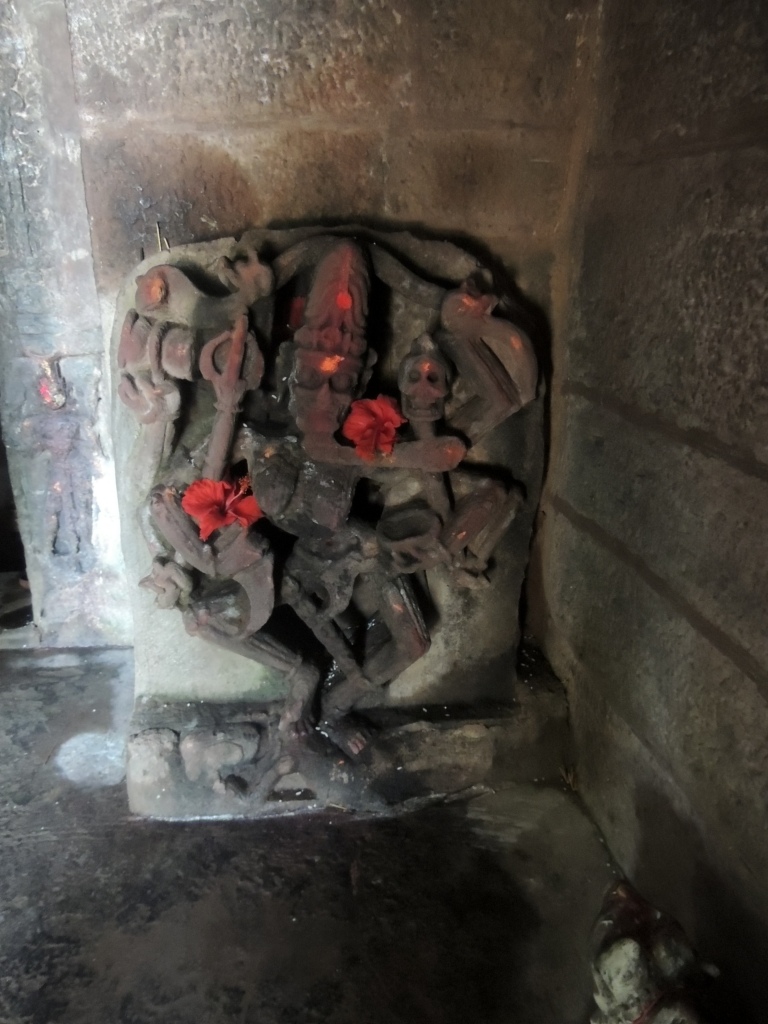
(Note: Actually, photography inside the temple is not allowed. We learnt about the rule after taking a few pictures and promptly stopped)
We were back at our cosy pad in Jagdalpur by 18.00hrs. The bottle of Black Dog was waiting.
******
Day Four: Kangerdhara, Kotumsar, Tirathgarh, Darbha
Today we bid goodbye to Jagdalpur as our night stay was booked at Darbha, in the Amcho Ladi Homestay run by Mr Rajnish Paniker. However, before that we were go deep inside the Kanger Valley National Park.
Today was going to be a hectic day.
The drive till the highway watering hole of Keshnoor was wonderful. After a heavy Paratha breakfast at Keshnoor, we left the Bijapur highway and turned towards Kanger Valley National Park. The Kotumsar Geological Cave and Kanger Dhara waterfall are situated inside the park.


The drive to the entry gate is quiet and slow.

Private vehicles are not permitted beyond the entry gate of the Park. One has to hire a licensed Maruti Gypsy with a guide.

The park houses two big caves: Kotumsar and Dandak. However, in one ride, one is permitted to visit only one of the two (at least that is what we were given to understand) although both fall on the same route. Since Kotumsar is far larger than Dandak, it becomes the default choice of most tourists.
We hired an open Gypsy at the booking counter and began a bumpy, 12 Km ride towards Kotumsar.
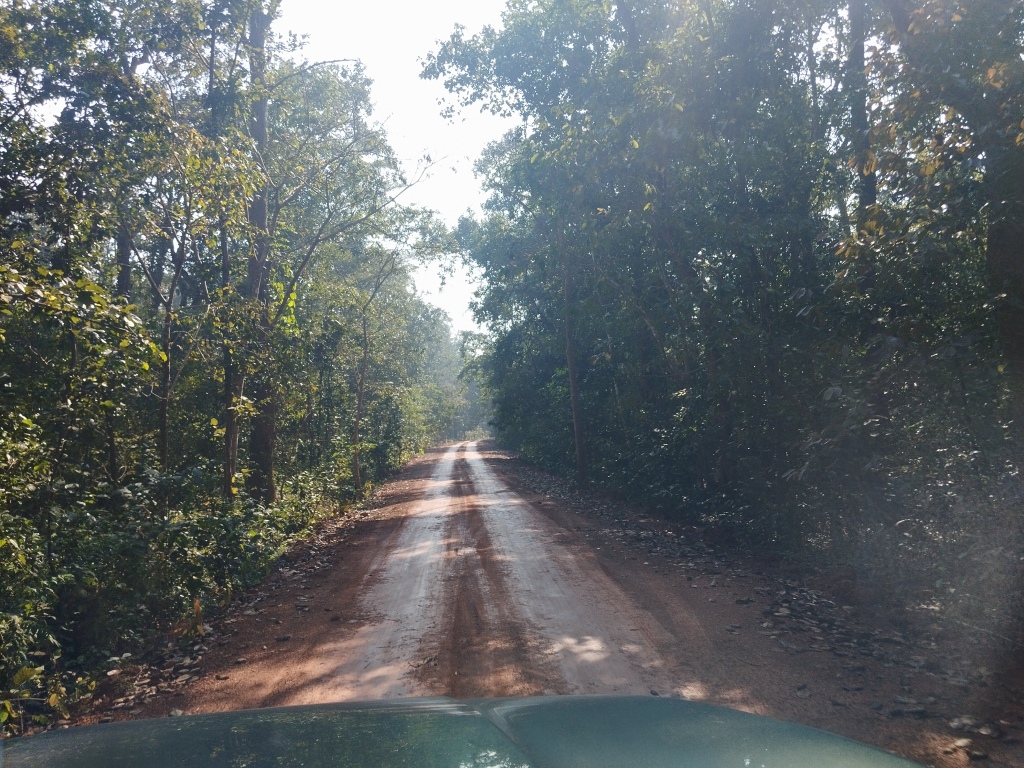
On the way, one gets to stop and spend some time at the Kanger Dhara waterfalls. It is more a cascade than a fall.


Having read a lot about the hundreds of mtrs long Kotumsar cave which lies at a forbidding depth of approx. 50 mtrs underground and houses such wonders as blind fish and delightful rock formations such as stalactites and stalagmites, we were eagerly looking forward to the experience.

A sketch on a hoarding gives the entire layout of the cave.

Entry to the cave is very narrow and dark. A person with a large body would find it difficult to enter.

Once inside, however, the cave expands to reveal a large area, almost the size of a three- storey building.

Artificial light source such as a torch or a flame is a must. Because inside the cave there is absolute, almost primordial darkness.


The fabled blind fish reside in tiny ponds (more a puddle than a pond) of water and are the size of fingernails. Clicking a picture was very difficult due to the overall absence of light, pale colour of the fish and the minuscule size of the water body.
We exited the Park after around two hours. However, the Kanger Valley tour was still not over. At the entry gate, there was a beautiful folk performance by local tribals.

And a shot of freshly brewed local rice beer available at a stall.
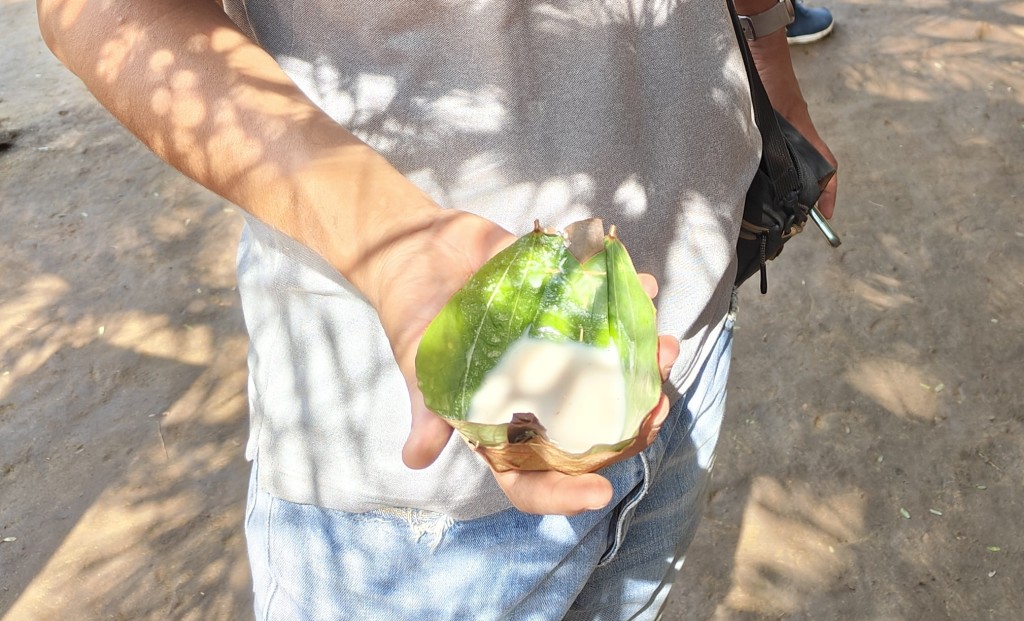
Feeling very exhilarated and cheered up by the whole package so far, we left the precincts of the Park and headed for the Tirathgarh waterfall.
Tirathgarh waterfall is just a short distance away from Kanger Valley Park. Unlike the deserted Tamdaghumar waterfall, this one is packed with frolicking crowds.



An array of holy figurines and shrines opposite the waterfall.



Our lunch and subsequent stay till tomorrow morning was booked at the Amcho Laadi Homestay run by Mr Rajnish Paniker and his family in Manjhipal village near Darbha. Mr Paniker’s name was recommended to us by the renowned Durg– based artist/ activist Ms Sunita Varma. Accordingly, we followed the Southbound road from Tirathgarh. A short distance before Darbha, we took a detour to Manjhipal along a village road which soon turned into an unpaved track.

The track to Manjhipal passed through thick lush green undergrowth on both sides which often brushed our car.
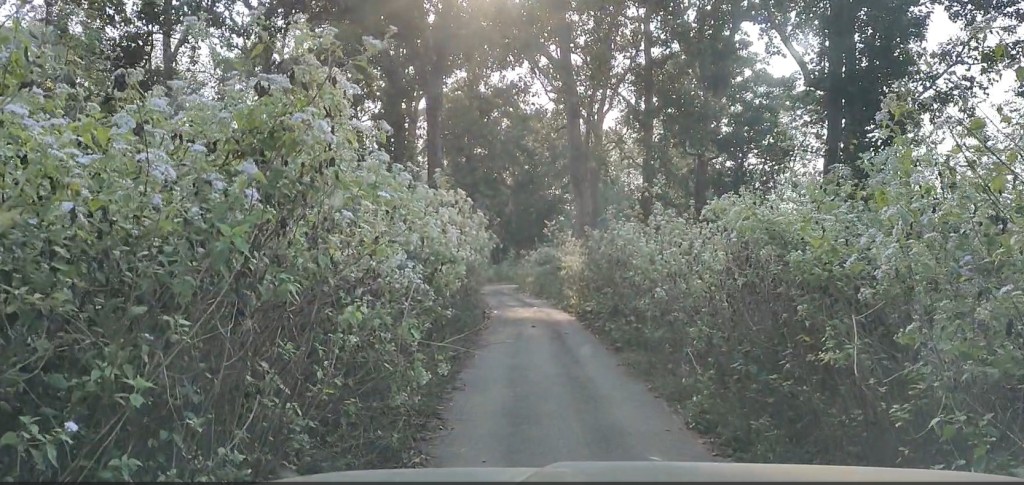
Within 10-15 minutes we found ourselves at a cluster of stone- and- earth huts titled ‘Aamcho Ladi’. It was nearly 14.00hrs.

Mr and Mrs Rajnish Paniker were there to welcome us with their young son and Mrs Paniker’s teenaged brother. Mr Paniker was an ethnic Malayali who was born and brought up in Chhattisgarh while Mrs Paniker was a local.

As a welcome drink, Mr RP offered us shots of Mahuva, the legendary local brew of Chhattisgarh, with boiled slices of a local root as snacks.

The strong, untamed flavor of Mahuva took some time to get used to. But it overpowered me in no time. Indeed, a ‘welcome’ drink in more ways than one!
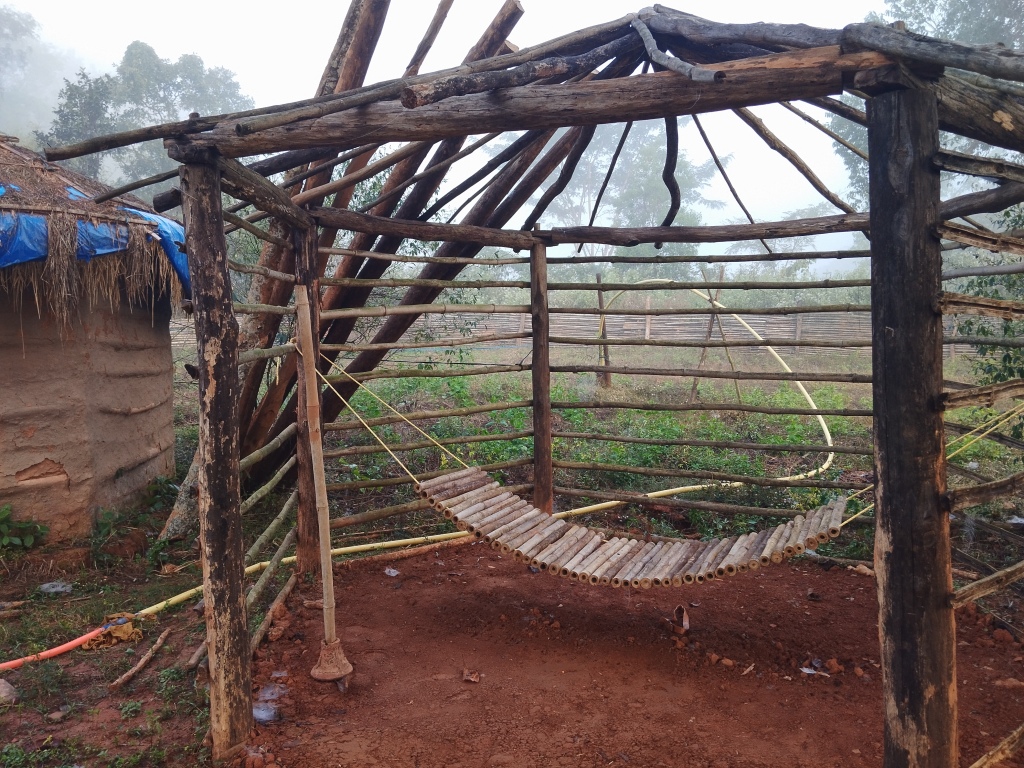
A simple but delicious lunch cooked by Mrs Paniker followed.

After lunch, Mr RP suggested that we visit the weekly tribal market in nearby village of Darbha. His shy, teenaged brother- in- law was to be our guide. We all got into the car and started for Darbha.

It was almost the winding- up time for the market but we could still go around and soak in the sights and sounds.

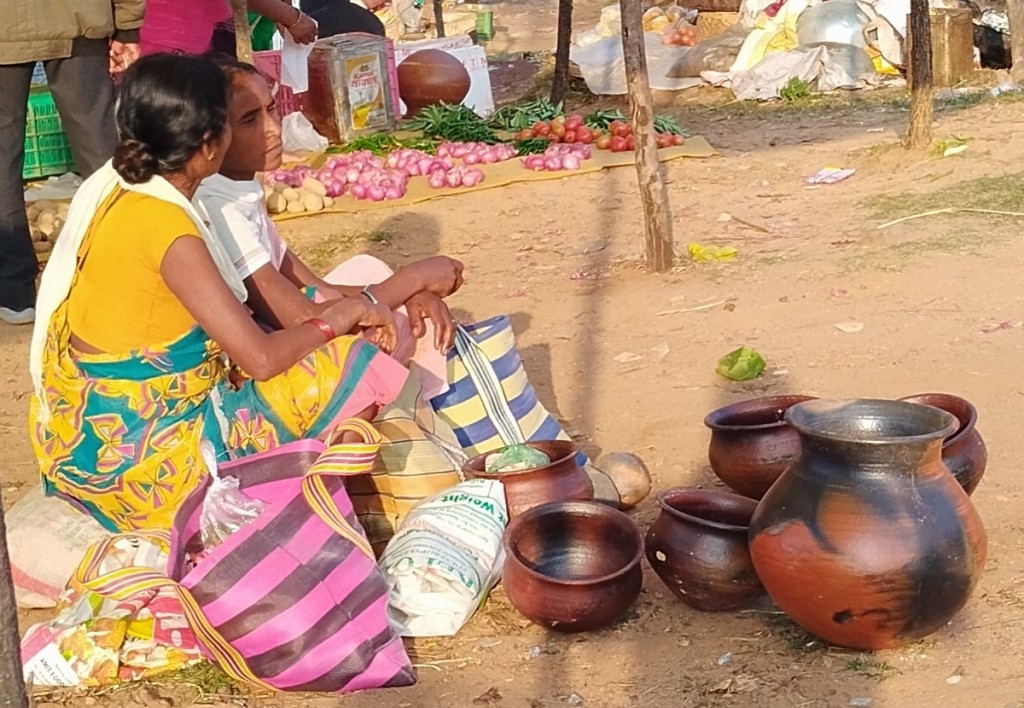
The much- discussed (but rarely attempted!) red ant chutney of Chhattisgarh was on sale in the market. We did our best to unsee it.

The next destination, Jhiram Ghati was a sombre one. It is the site of a tragic 2013Naxal ambush on Congress leaders and workers which resulted in deaths of 28 persons including such heavyweights as VC Shukla, Mahendra Karma and Nandkumar Patel. A memorial has been raised at the spot, with photographs of all 28 martyrs.

Even today the location has a menacing air. We didn’t linger around much and headed back to Manjhipal.
The day so far had been fairly exhausting. A short power nap was unavoidable. By the time we emerged from the cosy hut, darkness had taken over the forest. It was biting cold outside. But Mr RP had thoughtfully lit a small fire and laid out a makeshift Mahuva cocktail tray. He had invited three of his local friends from Jagdalpur to join us for a freewheeling chat session over dinner.

It was a warm, hospitable and cheerful gathering. Mahuva cocktails with mint flavour added to the merry. Mr RP and his friends deeply loved Chhattisgarh and were thoroughly knowledgeable about the culture, the geography and socio-economics of the region. Unending Mahuva shots kept coming. I was quite sozzled by the end of it. After a quick dinner, we retired for the night, pulled our blankets over and fell into a deep sleep listening to the staccato chirping of crickets outside.
*******
Day Five (Last day): Manjhipal village and Dholkal Ganesh
We woke up to a white, cold and magically silent morning. Thick fog clung to trees. The grass was damp with morning dew. Not a soul seemed to be awake. It was the perfect time for an early walk around Manjhipal village.

Which road to take? A decision dilemma!

A tree laden with tamarind. Darbha is one of the biggest wholesale tamarind markets in Asia.

A banana grove blurred by the fog.

A beautifully crafted fence.

Another one.

After an hour’s morning walk, we returned to our lair to find that a steaming hot breakfast of Parathas, Potato Fritters and homegrown Papaya (a French variety, Mr RP told us) was waiting for us.

It was time to bid adieu to the Paniker family and Manjhipal village. Our next and final stop in Chhattisgarh was the Dholkal Ganesh Hill near Dantewada which had earlier given us the slip. Today we were well in time and reached the base of the trekking route by 10.30hrs.
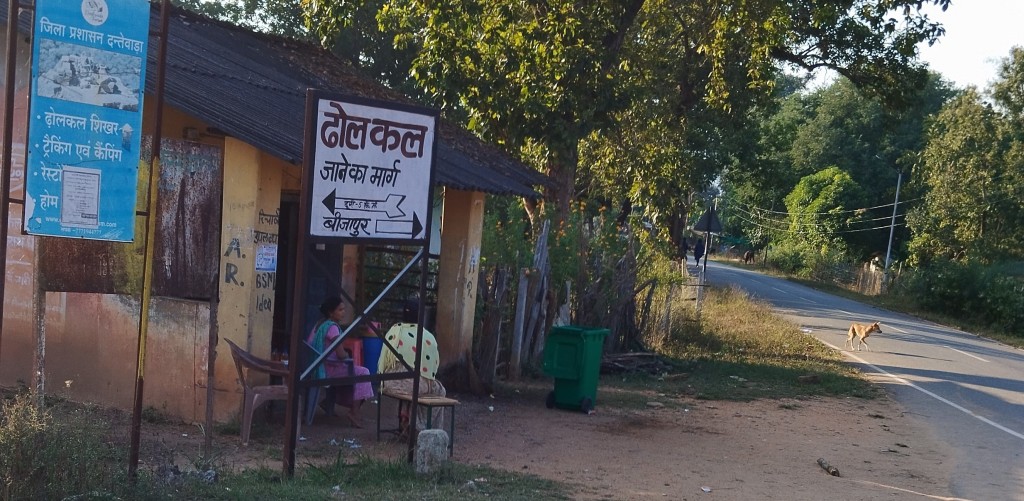
With a local lad named Kamlesh as my guide, I set off for the 7Km return trek to Dholkal Ganesh.

The difficulty level of the trek is moderate. Since the whole route passes through dense forest, heat and sun is not a problem. The climb is long but gradual.

The last part of the trek is highly exciting as one must negotiate a risky path across countless massive boulders perched precariously on a cliffside.

A yawning, densely forested valley spreads out on the other side

The stunning first view of Dholkal Ganesh idol.

The Ganesh idol appears very big in photographs but it is an illusion. In reality, it is similar in size to the average Ganpati idols brought at home for Ganesh Chaturthi.
The history of the idol is obscure. It is said to belong to 11th Century just like the Barsur temples. But how it came to be installed on such a desolate, inaccessible cliff and why remains an unsolved mystery.
A Shiva shrine also exists on a nearby rocky peak

How to seek blessings of Dholkal Ganesh: A photo tutorial!

******
And that was the end of our first trip to Chhattisgarh. Though we covered only two districts, Bastar and Dantewada, it left us wanting more.There is still Kanker, Raipur, Bijapur, Durg, Sarguja, Rajnandgaon, Bilaspur and numerous such other places. We also could not see the Indravati Wildlife Sanctuary in spite of it being in proximity of Jagdalpur.
Till we meet again, then.
**********
Postscript: I had enthusiastically carried my swimming costume, towel, assorted cosmetics (and perhaps my dabba phone too, as I can’t seem to find it either) in a pink backpack to Chitrakote where I enjoyed a dip in Indravati river. However, I forgot all about it thereafter. When we returned to Jagdalpur late evening, the backpack was missing. A lot of head- scratching later, I concluded that I had probably kept it down while taking a photograph at the Twin Ganesh in Barsur and then forgotten to pick it up. We tried to get a word across to Barsur through our local hosts. But the bag hadn’t been traced till our departure. If any reader finds it, please message me. 😊
